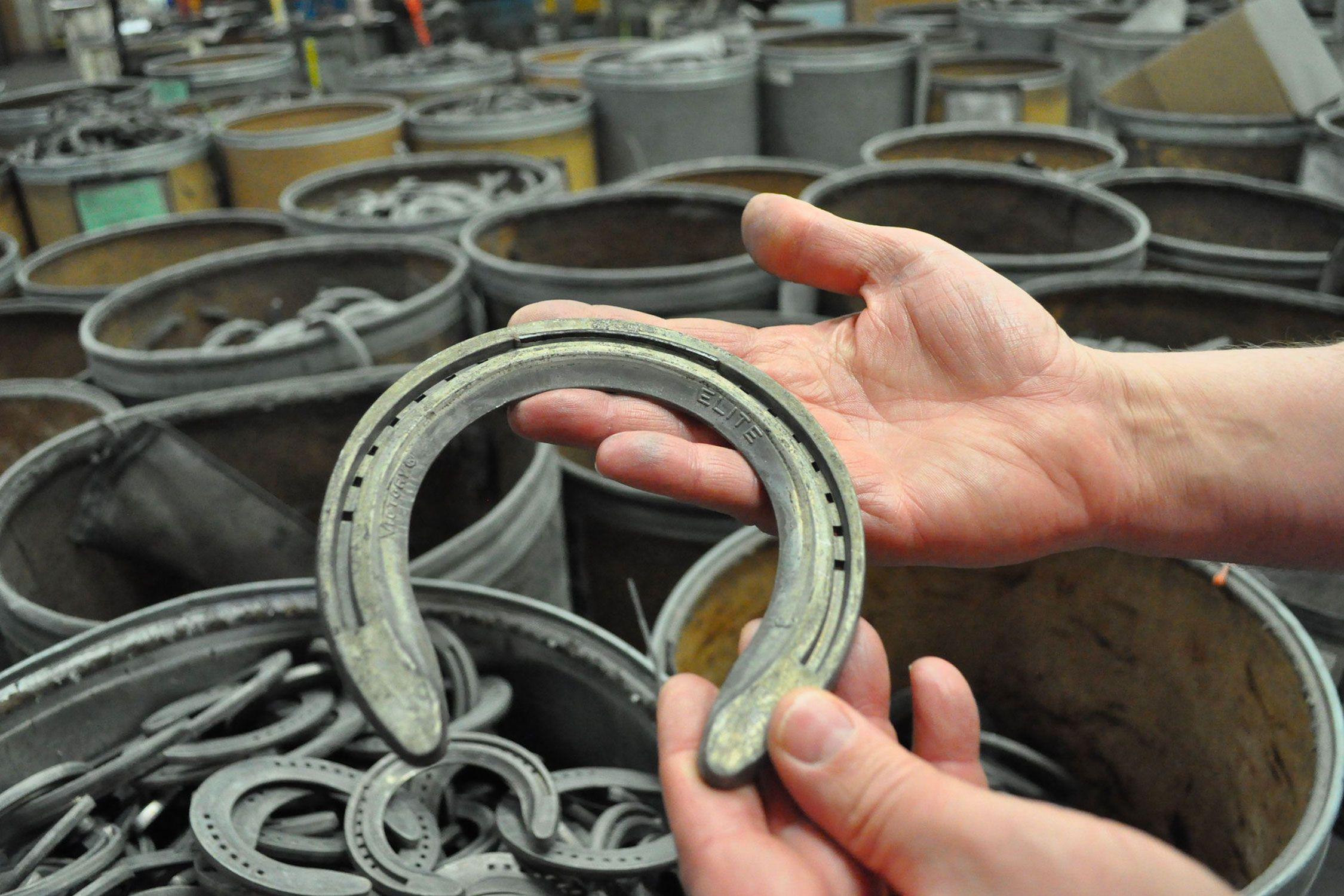Victory: the (horse) shoe of champions
05/17/2012| Nick Sohr
Article Topics:
Victory: the (horse) shoe of champions
05/17/2012 | Nick Sohr
By Nick Sohr, Managing Editor, MDBIZNews
Eleven horses have won the Triple Crown. Only one man has trained two winners, and only two owners can lay claim to more than one.
Victory Racing Plate Co., however, boasts connections of aluminum and steel to all but a handful of the winners.
Eight of those horses have taken the Kentucky Derby, Preakness Stakes and Belmont Stakes shod with Victory horseshoes or, if you're in the industry, "racing plates" forged by the company headquartered on a bumpy Rosedale side street so small it doesn't warrant a stoplight on Route 40.
"Wherever thoroughbreds race in the world, you'll find Victory plates," says Victory President David Erb, who has been with the company for 30 of its more than 80 years.
"For the last 10 years, the global market has really been oversaturated," he said. "We're proud to say that we still maintain the lion's share of the global racing plate market."
When the horses thunder across the finish line at Pimlico on Saturday, gunning for the 137th Preakness Stakes, many of them will be wearing Victory shoes.
Erb said he doesn't keep track of which horses wear the durable, lightweight one weighs about as much as a smartphone shoes his company makes.
"The cost of tracking that outweighs any benefit," he said.
Victory's shoes go to distributors then to farriers, some of whom take them overseas before they ever come close to a hoof.
Erb does, however, offer a few names. They include Smarty Jones, who won the Derby and the Preakness in 2001 before finishing second at the Belmont. Another, Funny Cide, won the first two legs of the Triple Crown in 2003 and was a heavy favorite to win the third. But another Victory-shod horse, Empire Maker, took the Belmont.
Early in Victory's history, big-name clientele included Omaha the 1935 Triple Crown Winner trained by Sunny Jim Fitzsimmons, the only trainer to take the crown twice and Seabiscuit, a Fitzsimmons horse that in 1938 beat War Admiral, another Triple Crown winner.
In 1973, Secretariat wore Victory plates on the way to the Triple Crown.
Victory's roots, however, can be found on the hooves of Signola, a horse all but lost to history.
One day in 1926, Leonard Liepman, a Baltimore lawyer, put a set of English-style aluminum racing plates on Signola and noticed a significant improvement in the horse's time over previous races during which it wore traditional steel plates. But, the softer aluminum plates lasted only the one race.
Liepman took his idea, an aluminum and steel horseshoe, to Bethlehem Steel and ALCOA. Engineers at both said the plan wouldn't work. The metals, they said, could not be forged together.
After years of development, Liepman began production in 1929 in the garage of an apartment building in downtown Baltimore. Victory later moved to a larger facility but was forced to move again in 1971 to make way for Route 83.
Now in Rosedale, Victory's plates are made from a sturdy, lightweight aluminum alloy and reinforced with strips of steel in the toes.
"Anytime you hear a jet engine and you look up and see an aircraft flying overhead, it's essentially the same aluminum that's used in the airframe of that aircraft," Erb said.
According to the company, through the 1960s, 98 percent of all winners of thoroughbred stakes races in the United States wore Victory racing plates.
Today, much of the production process is automated but the staff of 35 never strays too far from the line. The company makes plates for thoroughbred racers, standardbred horses used in harness racing, show jumpers and other competitive equines. Victory makes millions of plates a year, according to Erb.
Victory employees meet with farriers and others in the industry to tweak the 63-page catalog, and add new pages to it.
Erb said the company is working with a European inventor on technology to insert computer chips into its plates to measure force, stress and other factors. Victory is also collaborating with a trainer on a horseshoe that will allow the natural shock absorber in a hoof to expand as it hits the ground.
"When you're in the leadership position in an industry, everybody's taking their shots at you," Erb said. "That's why in the rental car industry, Avis used to say 'We try harder,' because they always wanted to be like Hertz. Well, everyone wants to be like Victory, so the pressure is on us to maintain that leadership role and maintain that market share. We work hard to do that."
Keep up with the latest.
Sign up for e-mail notifications.
